Mathematical Morphology and Image Interpolation
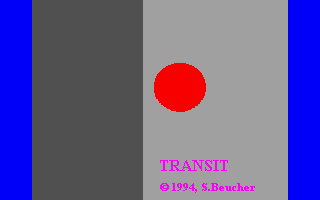
Image interpolation is a general term for a set of
techniques used in image synthesis to generate intermediary pictures
between two successive images. Various tools may be used to achieve
this: linear tools (average of more sophisticated weighting functions),
interactive means (morphing techniques), etc.
In this page,
we present some interpolations performed by using mathematical
morphology transformations. In these examples, the interpolations are
based on a transformation named SKIZ (Skeleton by Influence Zones). More complex transformations, such as geodesic operators or Hausdorff distance computations, can also be used.
Besides
the funny aspect of these interpolations, they are also used to solve
more "serious" image analysis problems in particular in image
compression, image coding, object tracking, as it is illustrated in
some animations available in this page.
Set interpolations
Here
are some examples of set interpolations. The first and last images of
each example are displayed. Click on the corresponding link to show the
intermediary sets (animated GIF).
Animation 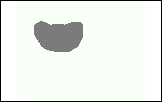
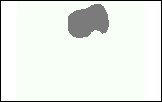
Animation 
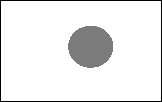
Animation 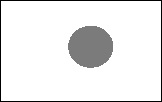

Animation 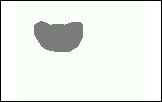

Animation 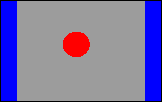
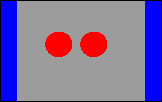
Greytone image interpolations
This
interpolation technique can also be used on greytone images. It is
still a set interpolation. The sets which are interpolated are the sets
under the graph of the starting and ending functions (3D sets). This is
illustrated in the following example where the initial and final images
are the same as in the last set interpolation, but where they are
considered as greytone images (click on the left picture to see the
animation).
This approach can be compared with a classical
arithmetic interpolation (click on the right picture). The
morphological interpolation better preserves the topological
(connectivity) properties of the images (although a little bit altered
compared to the set interpolation).


Partition interpolations
Morphological
interpolation can also be used to interpolate partitions. Each
corresponding cell in the initial and final partitions is interpolated,
its color or grey value remains unchanged.
Animation 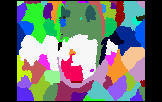

This
kind of interpolation is particularly useful in image compression. Many
techniques exist to generate a partition from any greytone or color
image. We can, for instance, define a mosaic image, by means of the watershed transformation.
A very simple solution to increase dramatically the compression rate of
a sequence is to transmit only one image over n in the sequence and to
interpolate the missing images.
The following animations
show an original sequence (on the left) and the final result (on the
right) when only one image out of eight have been transmitted, the
others being interpolated.


The
result is not perfect (mouth and left eye in particular) but it can be
greatly enhanced if we transmit and add to the final sequences the
small white and black features detected with a top-hat transformation.
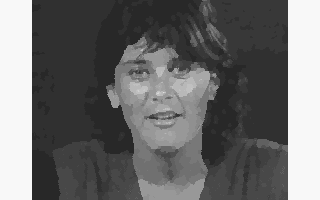
These interpolation techniques are patented (Patent n°94-14162), inventors S. Beucher, F. Meyer, J. Serra.
Images and animations copyrighted ã 1996, Serge Beucher, All rights reserved.
Serge BEUCHER Home Page
CMM Home Page


















